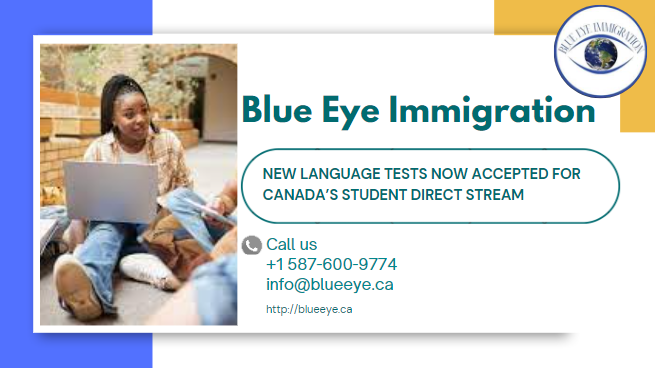As of today, August 10, 2023, Immigration Refugees and Citizenship Canada (IRCC) is incorporating four newly approved English language tests for Student Direct Stream (SDS) applicants.
The new list of approved language tests include:
- Canadian English Language Proficiency Index Program (CELPIP) General;
- Canadian Academic English Language (CAEL); and
- Pearson Test of English (PTE) Academic;
- Test of English as a Foreign Language Internet Based test (TOEFL iBT).
In addition to these tests, students can also take the International English Language Testing System (IELTS) General Training or Academic tests. It should be noted that the following changes to IELTS requirements for the SDS will also come into effect on August 10th:
- If you’re applying from the 10th of August 2023, with IELTS Academic, an overall band score (the average of all individual skill section scores) of 6.0 is required;
- If you applied with IELTS Academic before the 10th of August 2023, you’ll need a score of 6.0 in each skill (speaking, listening, reading and writing); and
- If you’re applying with IELTS General Training, you will still need a 6.0 in each skill section, before or after 10th August 2023.
To be eligible for the SDS, all test results must show a well-rounded command of an official language of Canada (English or French) , covering abilities in speaking, listening, reading, and writing.
Specifically, students testing in English must achieve a total score of at least:
- 7 for CELPIP General tests; or
- 60 for CAEL tests; or
- 60 for Pearson Academic tests; or
- 83 on TOEFEL iBT tests.
Importantly, these tests must be taken in-person; as, online or remotely proctored tests are not eligible for the SDS applicants’ consideration.
What is the Student Direct Stream?
The SDS is a program that provides accelerated processing of study permits for international students originating from specific countries. The program seeks to maintain a processing business standard of 20 calendar days for eligible study permit applications.
The list of eligible countries includes Antigua and Barbuda, Brazil, China, Colombia, Costa Rica, India, Morocco, Pakistan, Peru, Philippines, Senegal, Saint Vincent and the Grenadines, Trinidad and Tobago, and Vietnam.
To meet SDS applicant eligibility, students must:
- Be a legal resident of the specified countries;
- Provide a copy of a letter of acceptance from a Canadian Designated Learning Institution (DLI).
- Present confirmation of an upfront medical exam;
- Possess, or prove they have acquired a Guaranteed Investment Certificate (GIC) of $10,000;
- Prove that tuition fees have been paid for the first year of study;
- Provide proof of the language test results obtained within two years of the application being received, showing eligible test scores for the SDS; and
- Submit their application at a Visa Application Centre (VAC).
Note that due to the program guidelines for government officials, even if all of these eligibility requirements are present, an IRCC officer may still reject the application if they feel it doesn’t provide enough proof that the international student can fulfil the conditions of their stay in Canada. You can find more information about how to increase your chances of study permit approval here.
As a testament to the success of these initiatives, Canada hosted more than 800,000 international students at the end of 2022, the highest number in the country’s history. This number showcases an almost 10-fold increase since 2008, due to a combination of internal and external factors. Domestically, the Canadian authorities and DLIs have engaged more assertively in attracting international students for their contribution to the economy, societal diversity, and cultural richness. On a global scale, the rise in middle-class populations has caused a surge in the international student population. Canada serves as an educational hub owing to the quality of education, multicultural reputation, and promising career and immigration prospects it offers after study—something that the country has over even other competitive international student markets like the United States.

